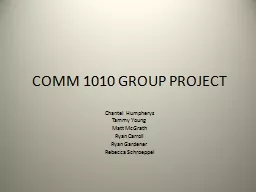PPT-Documenting Goals of Care Conversations AND RESOLVING CONFLICTS
Author : briana-ranney | Published Date : 2019-01-19
New CPRS Documentation Process LifeSustaining Treatment Progress Note Goals of care and lifesustaining treatment decisions Can automatically launch LST Orders LifeSustaining
Presentation Embed Code
Download Presentation
Download Presentation The PPT/PDF document "Documenting Goals of Care Conversations ..." is the property of its rightful owner. Permission is granted to download and print the materials on this website for personal, non-commercial use only, and to display it on your personal computer provided you do not modify the materials and that you retain all copyright notices contained in the materials. By downloading content from our website, you accept the terms of this agreement.
Documenting Goals of Care Conversations AND RESOLVING CONFLICTS: Transcript
Download Rules Of Document
"Documenting Goals of Care Conversations AND RESOLVING CONFLICTS"The content belongs to its owner. You may download and print it for personal use, without modification, and keep all copyright notices. By downloading, you agree to these terms.
Related Documents














